German Army Post-1936 Signals Officer's Field Cap M38
SKU: 20.GOR.01.03.01.03.01.02.007
Estimated market value:
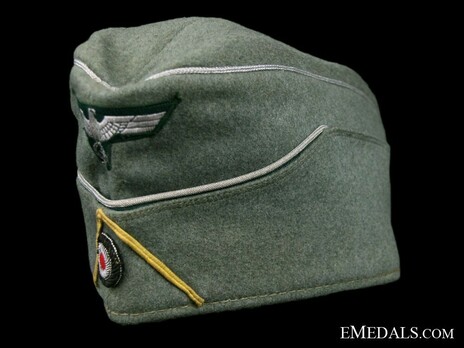
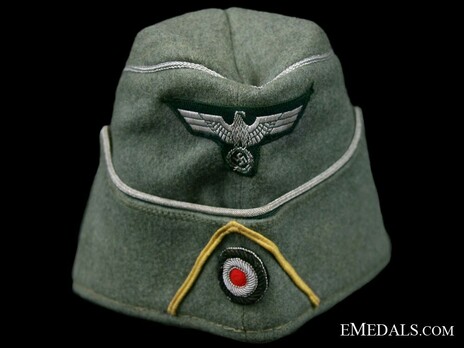
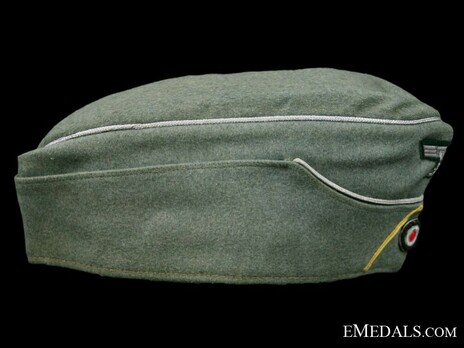
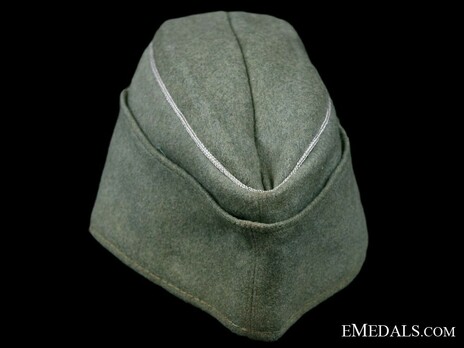
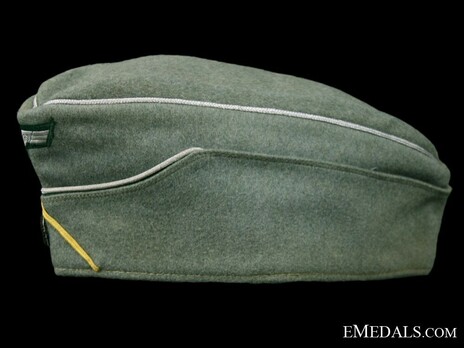
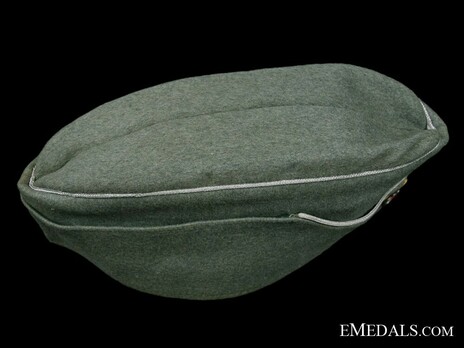
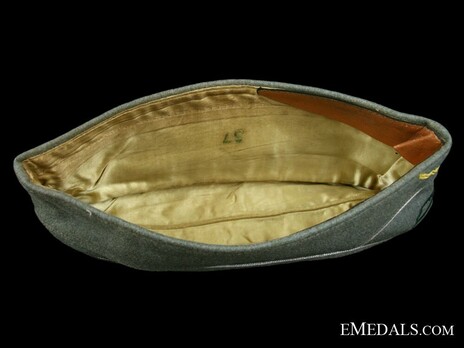
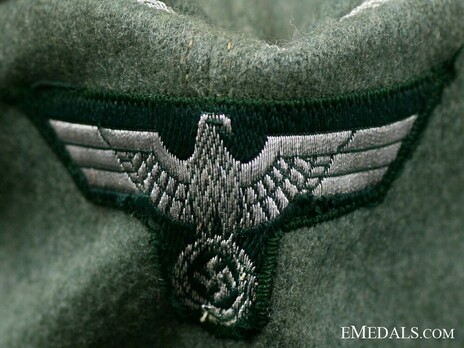
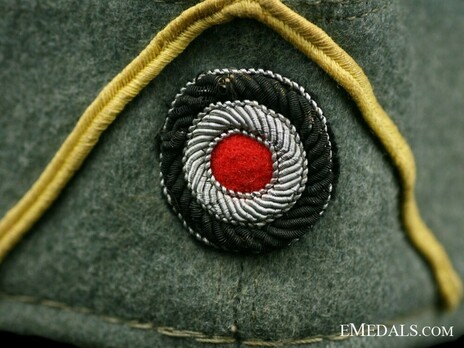
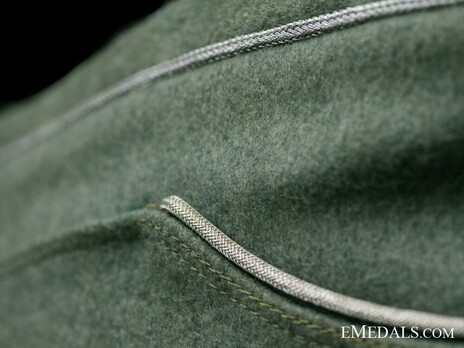
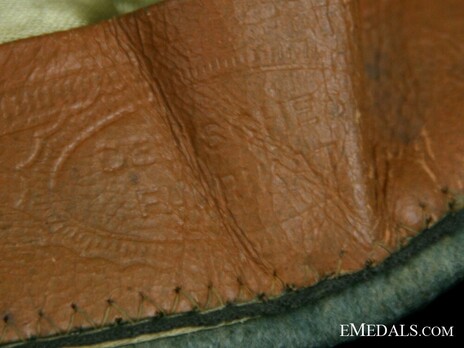
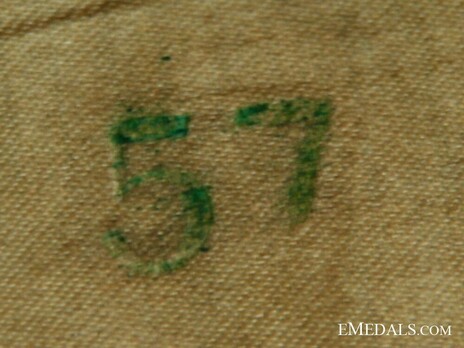
Estimated market value:
Attributes
Physical Description
Piping: silver
Soutache: lemon yellow
History
The Field Cap was introduced in 1934. The cap is in the so-called “boat” (Schiffchen) form. It was to be worn when the Service Cap wasn’t in use. The cap was made from a mixture of field-grey wool and cellulose fibre. It has a turnup that could be lowered to cover the ears, as well as two grommet ventilation holes, one on each side.
The earliest of these caps showed a cockade on the top of the front, with a soutache, and inverted chevron, indicating branch colour. The cap had side panels fastened to the front of the cap by means of two buttons. When fastened this way, they partially covered the soutache.
In 1935, the design was slightly changed. From then on, the national eagle insignia was worn on the top of the front, with the cockade and soutache below, on the side panels. The side panels had fused, the buttons were eliminated, and so the panels were permanently affixed to the front.
Unlike on other caps, no oak leaves wreath was worn with the cockade on the field cap.
On December 6, 1938 a field cap for those in General or Officer rank was introduced. It is similar to the M35 cap, but better in quality, and emblems were made from metallic thread. The cap was piped in silver for Officer ranks and in gilt for General ranks. There is piping on the top and also on the ear flaps. The soutache is in branch colour for Officer, but in gilt for Generals. The only exception were administrative Generals, who had a dark green soutache.
The M42 Field Cap was introduced on July 21, 1942. It was mainly produced for the soldiers on the Eastern Front, struggling with the harsh winter temperatures in Russia. The earlier models had proven ineffective to bring relief. On this model, the side panels could be lowered in a similar way to that of the Mountain Cap to cover the sides of the head, the neck, and the mouth. When not lowered they were affixed to the front of the cap by two buttons.
It was supposed to be worn by NCOs and EMs only, however piped versions for higher ranks have been observed. With the introduction of this cap, all soutaches were to be removed, but this order was often ignored.
The Panzer versions of these caps are in black, whereas the Tropical versions are in different shades of brown, olive-green, khaki, or sand-coloured.
The terms M(odel) 34/35/38/42 were introduced by collectors and have no official character.
Branch colours on German Heer headgear was as follows:
Black was worn by Engineer units.
Black/White was worn by Panzer Engineers.
Copper Brown was worn by Motorcycle personnel.
Carmine was worn by the Führer Staff, General Staff Officers, Staff Officers of the Supreme Command of the Army, and all Veterinary branches.
Bordeaux Red was worn by Smoke & Chemical personnel.
Bright Red was worn by Generals, Artillery units, and Ordnance Officers (until 1944).
Rose was worn by all Armored units (including Panzer troops, and Schützen Brigade Staff).
Orange was worn by Recruiting personnel, Ordnance troops, Ordnance Officers (since 1944), and Field Gendarmerie units.
Bright yellow was worn by Cavalry units, and Light Division Staff.
Lemon yellow was worn by Signal units.
White was worn by Infantry units.
Light Grey was worn by Propaganda personnel.
Grey-Blue was worn by Sonderführer (Specialist Officers).
Violet was worn by Chaplains and Field Bishops.
Cornflower Blue was worn by Medical units, and Supply units.
Bright Blue was worn by Transport troops.
Bright Green was worn by Jäger and Mountain units.
Grass Green was worn by Panzer Grenadier units (Armored Infantry).
Dark Green was worn by Administrative personnel.


Comments
Sign in to comment and reply.


Scroll Top